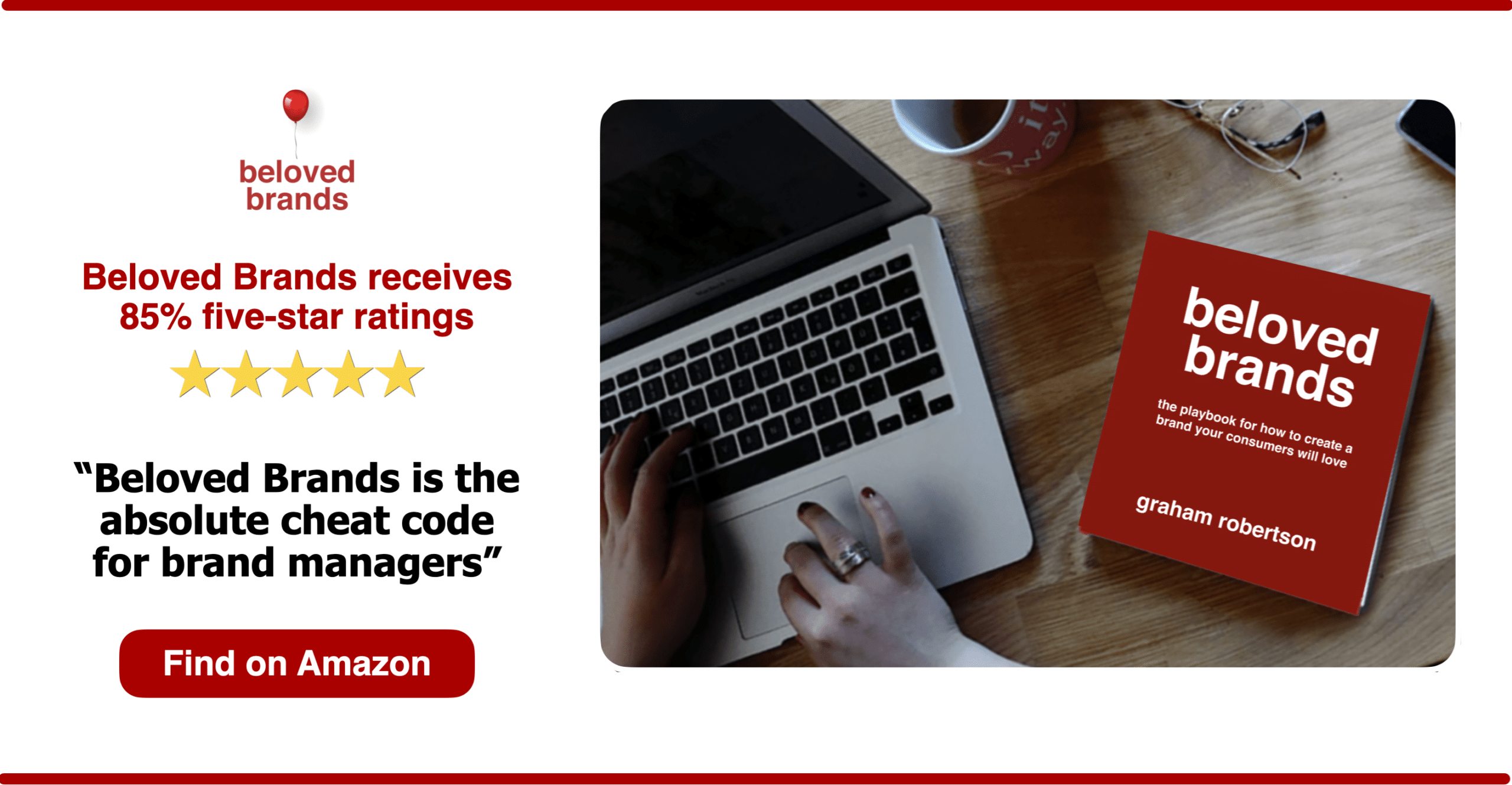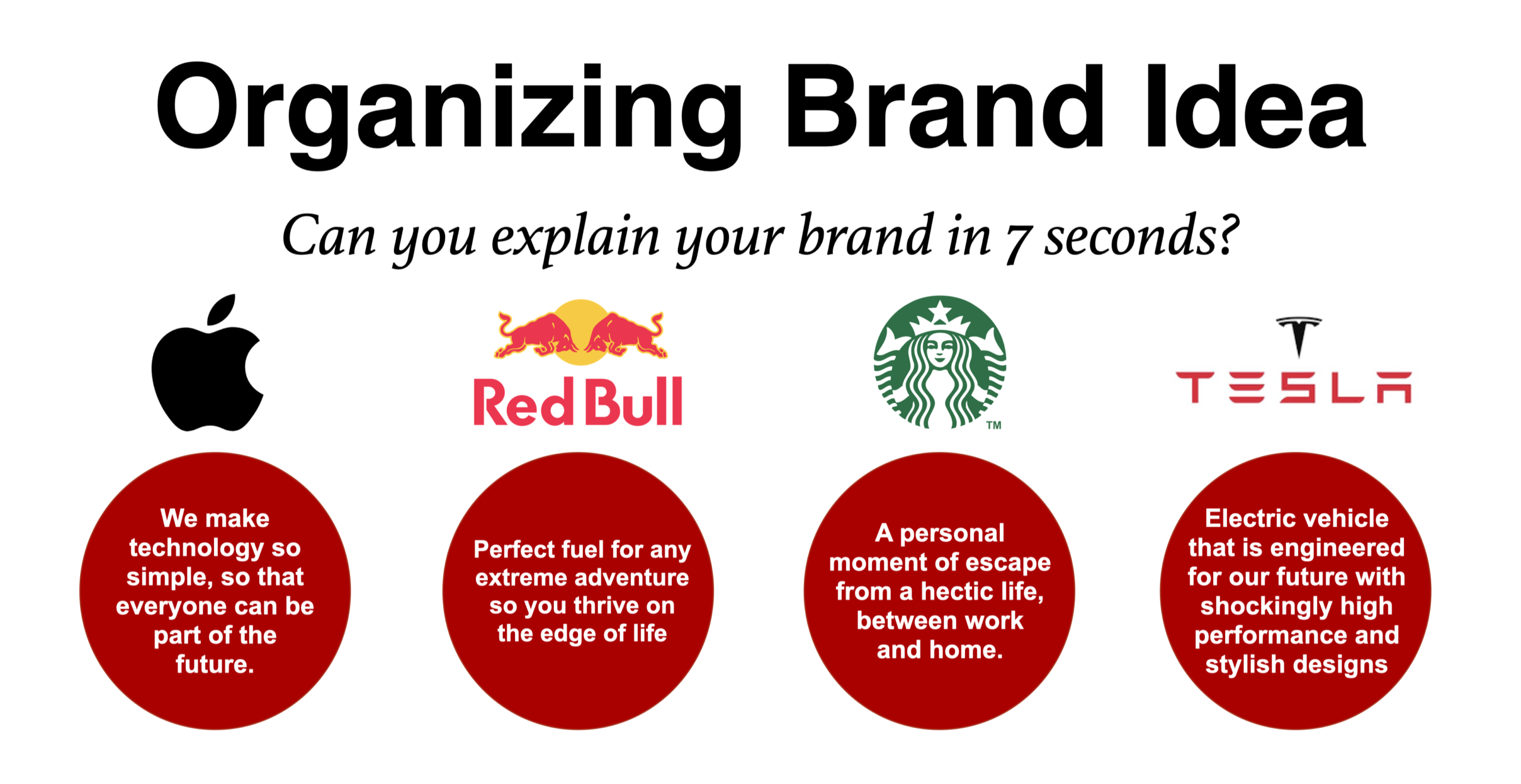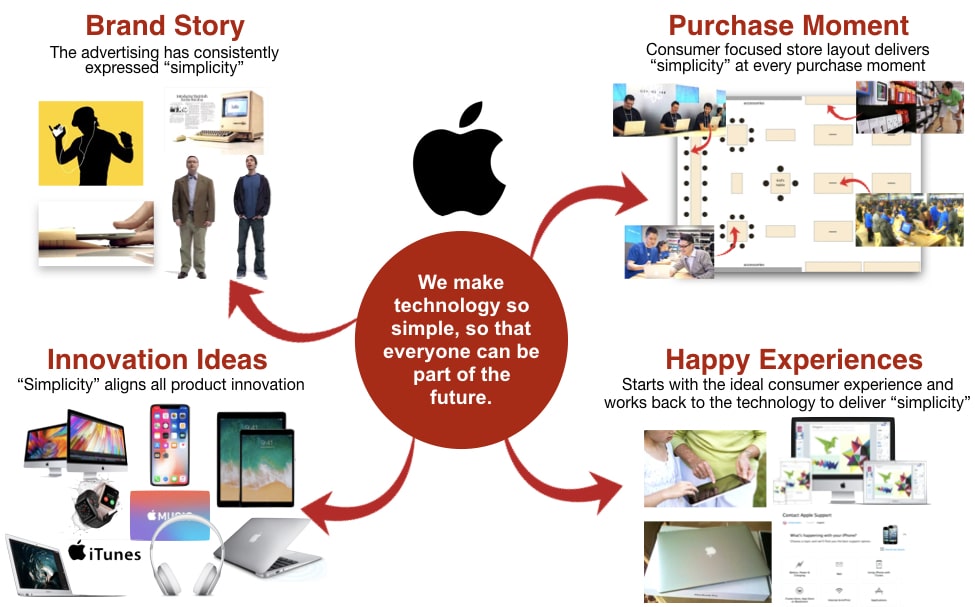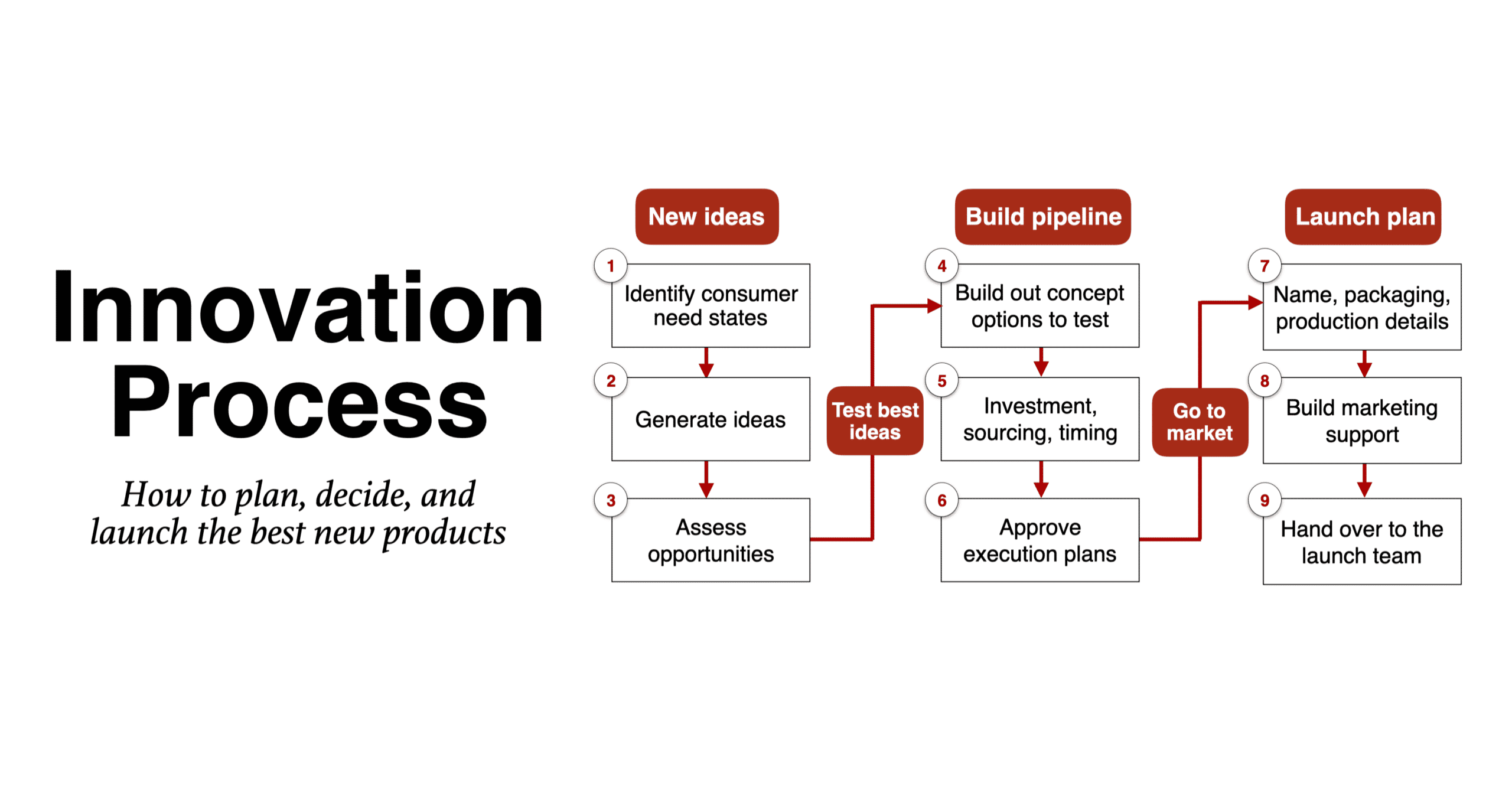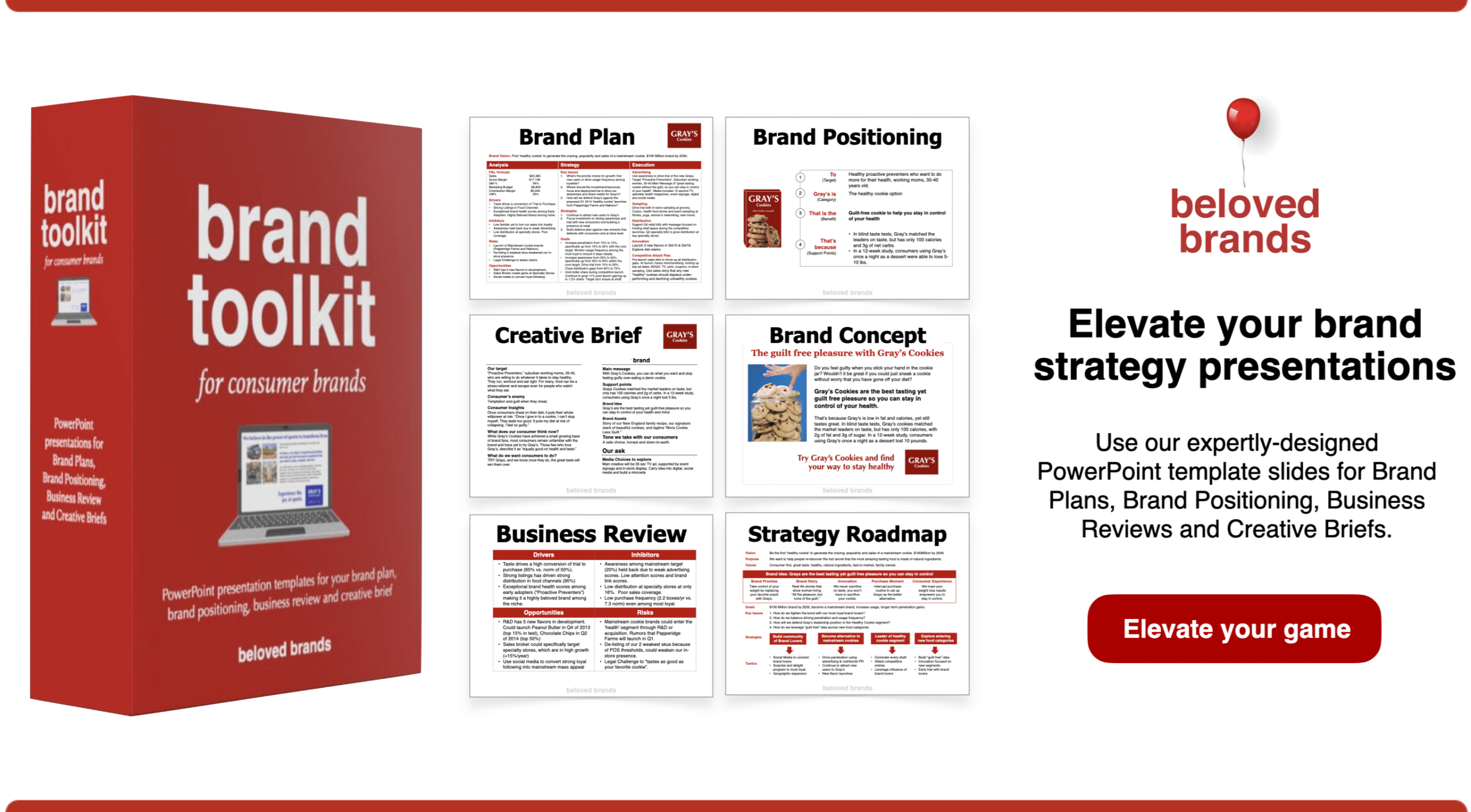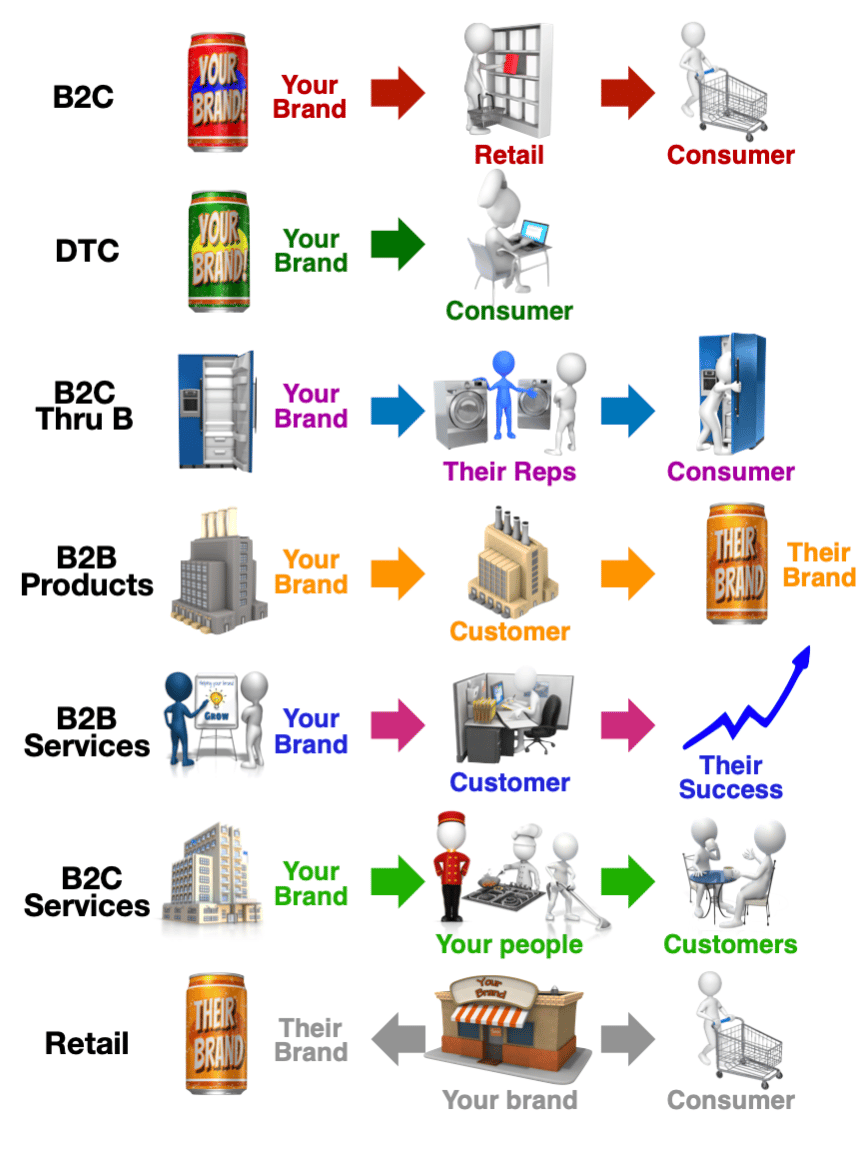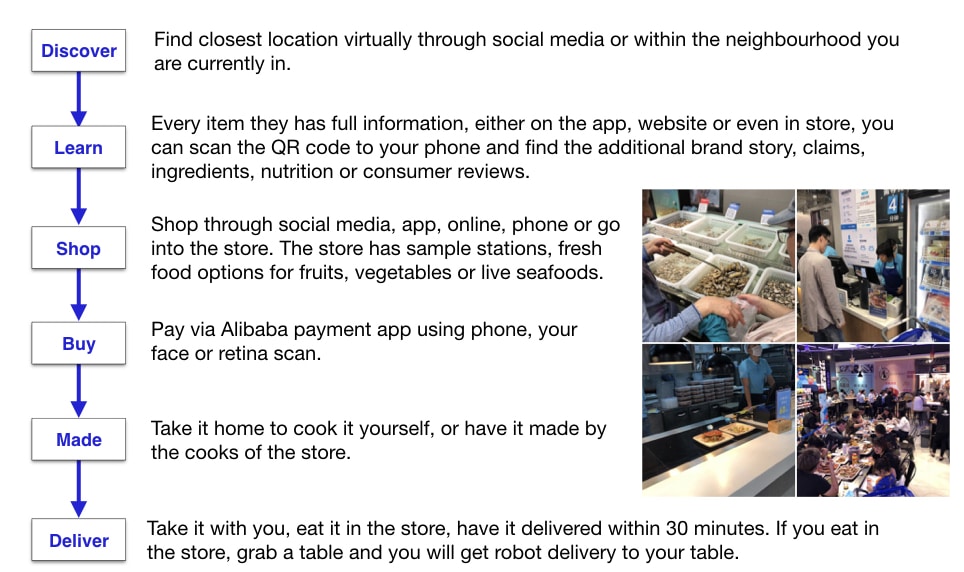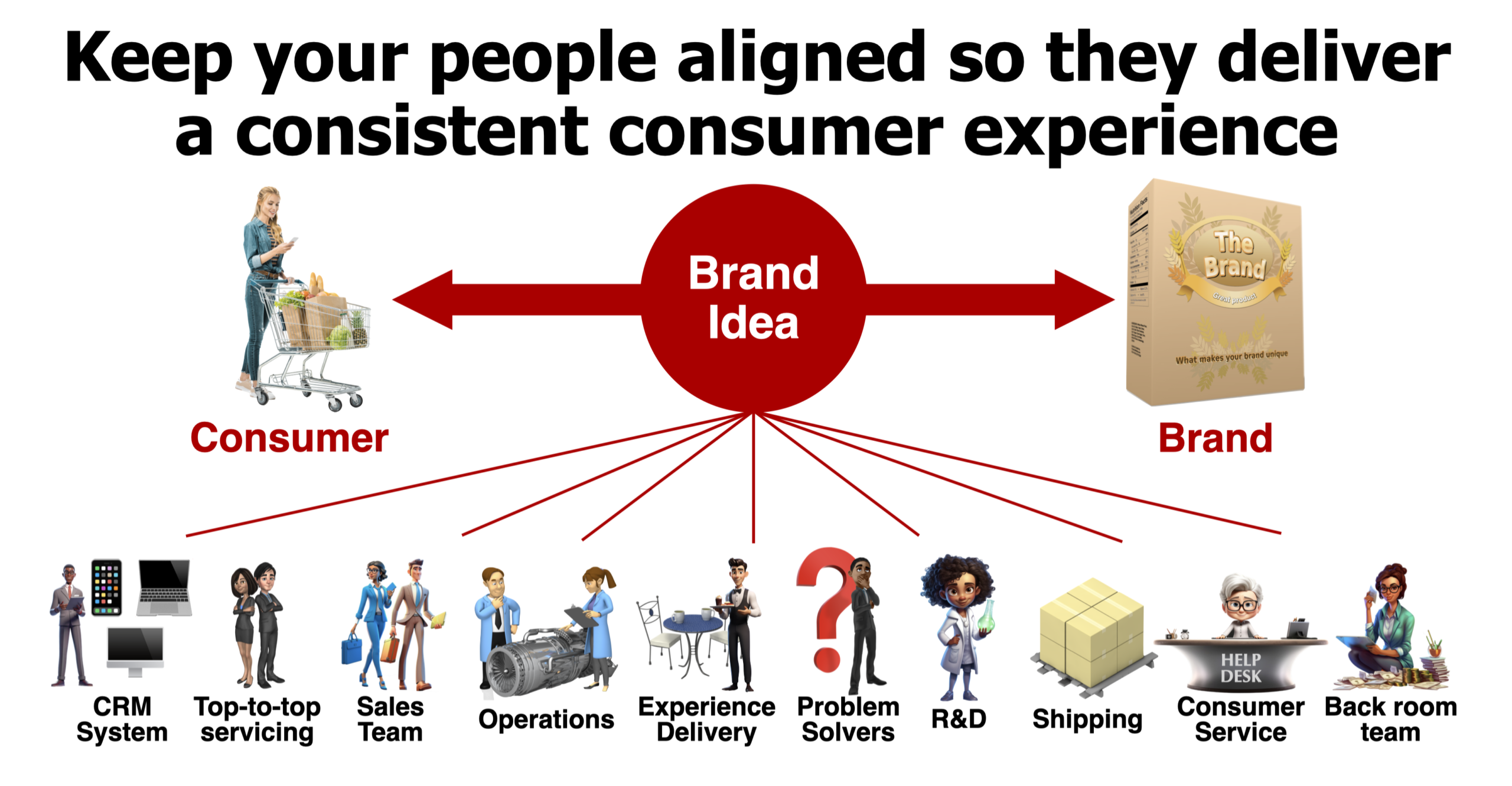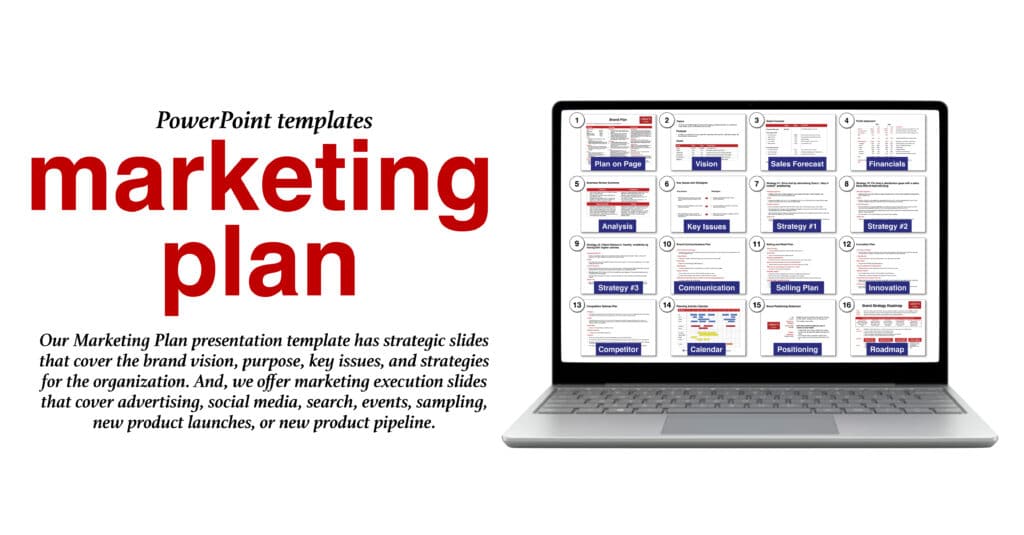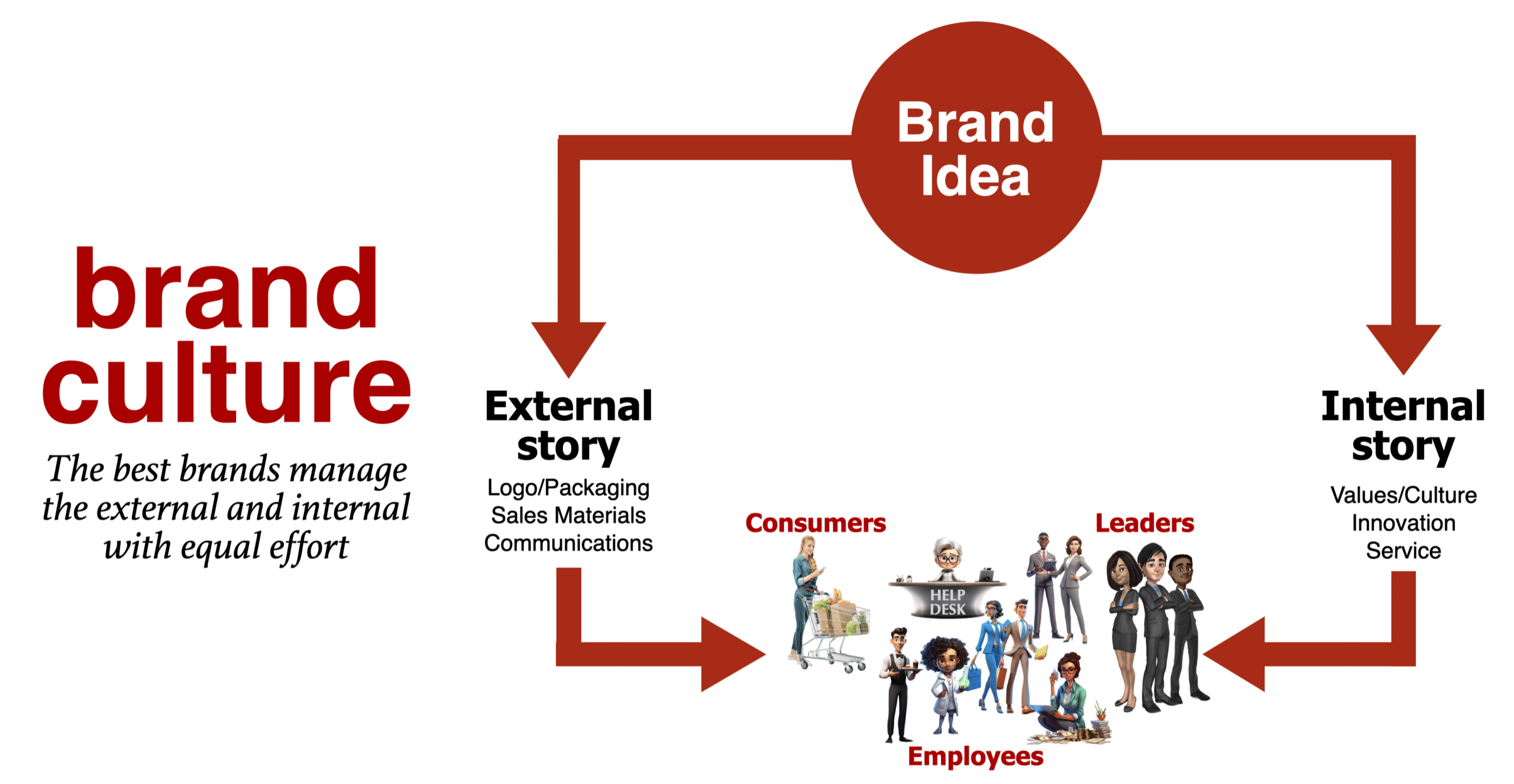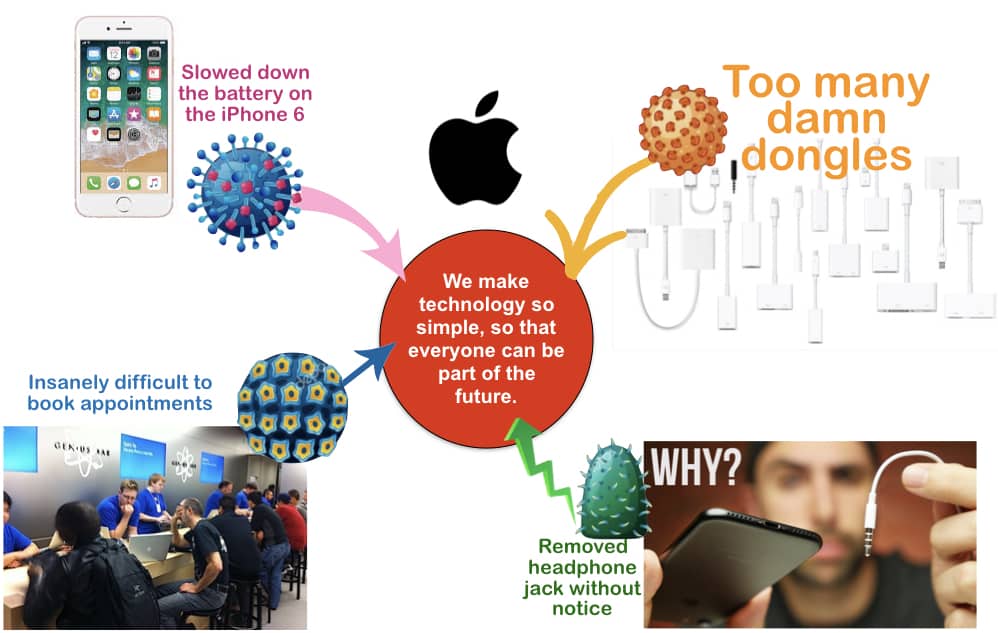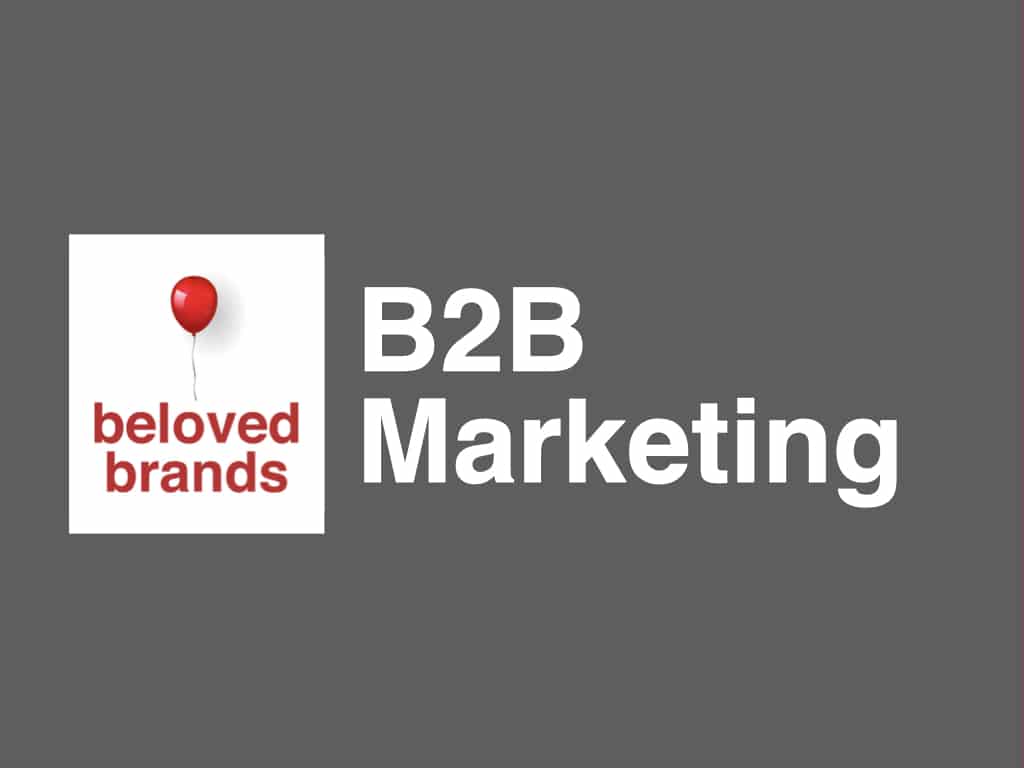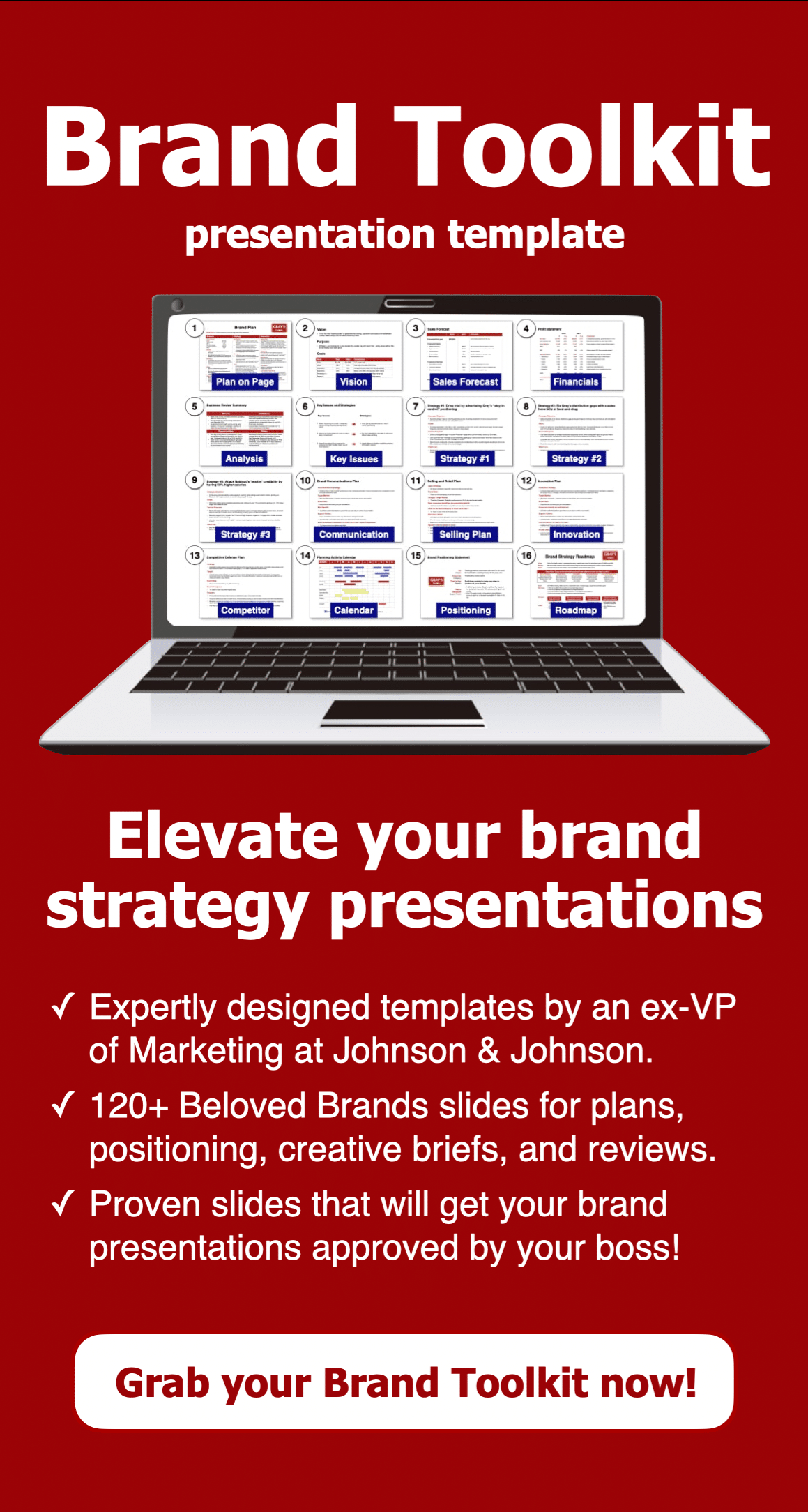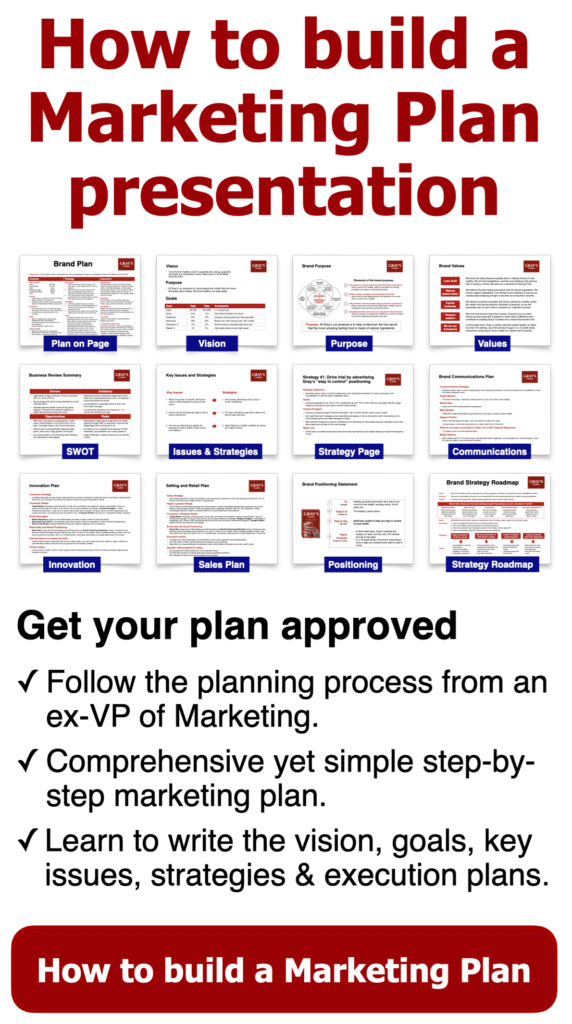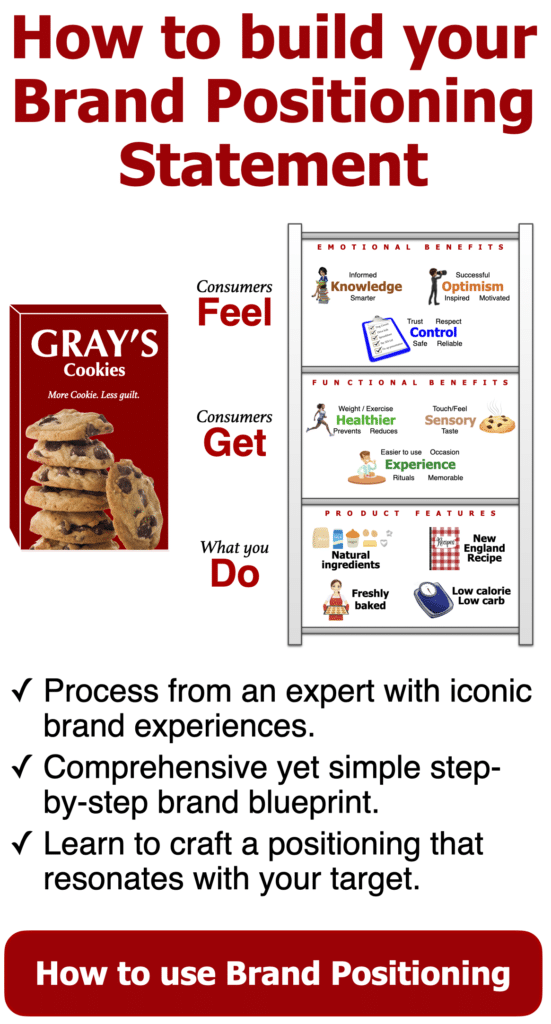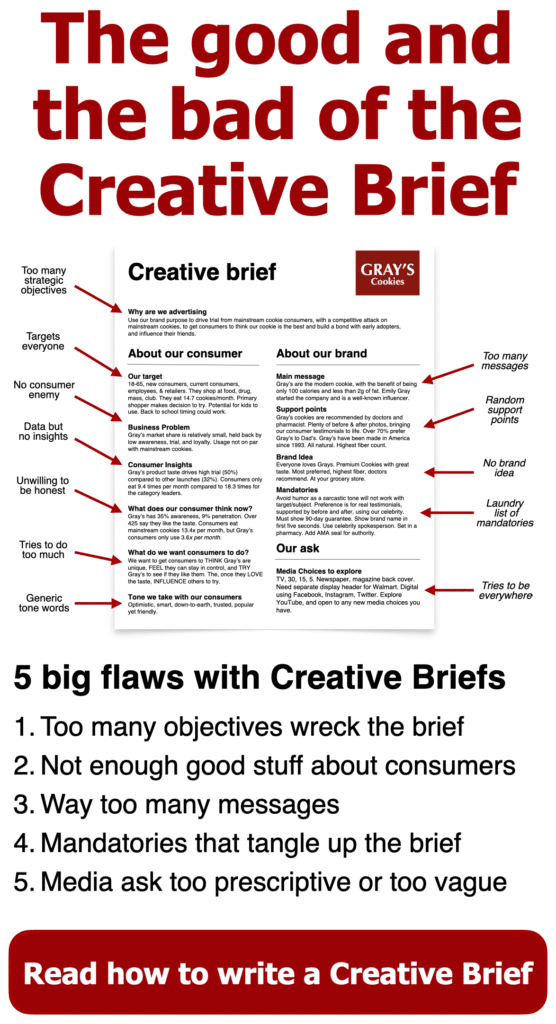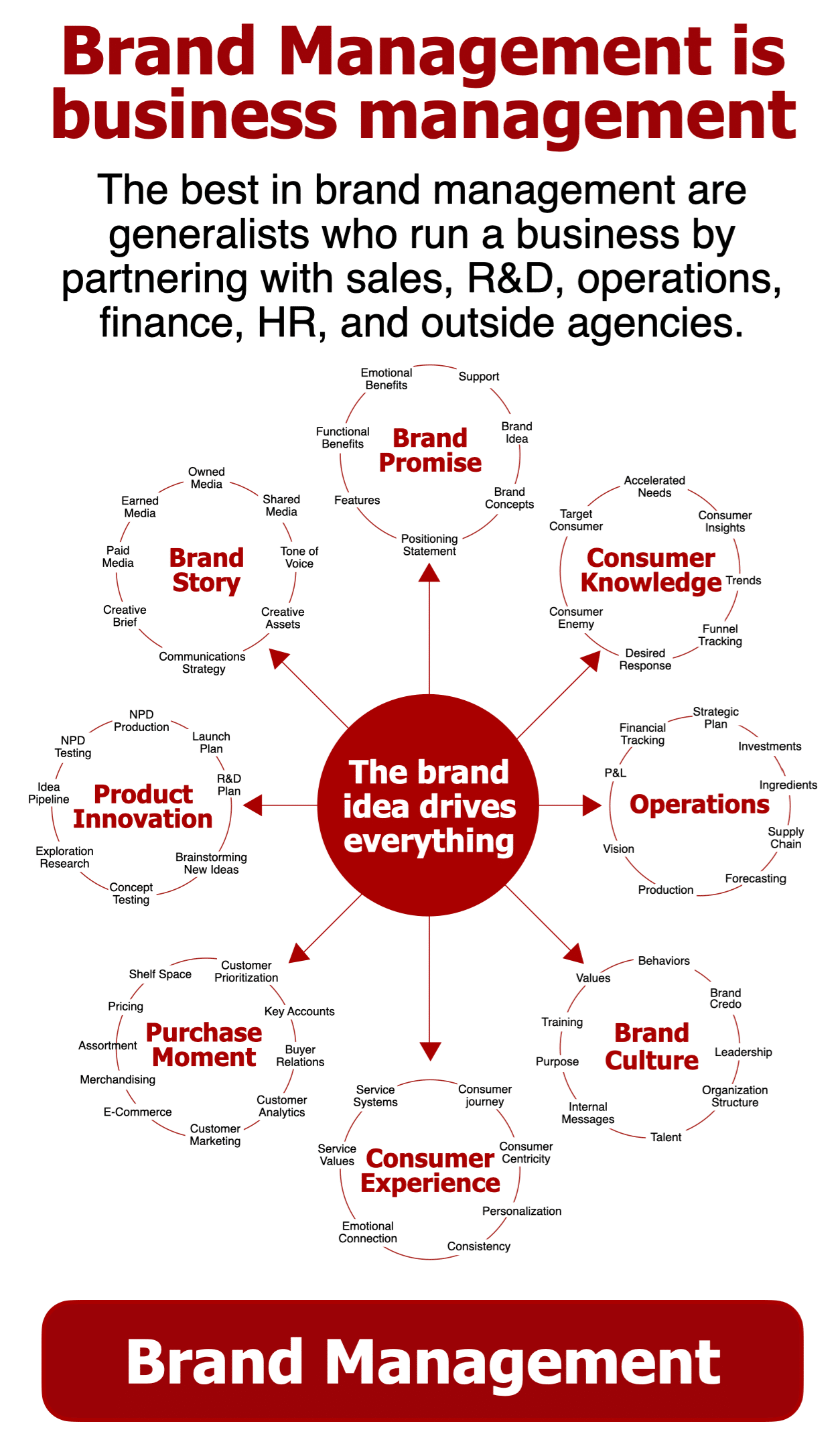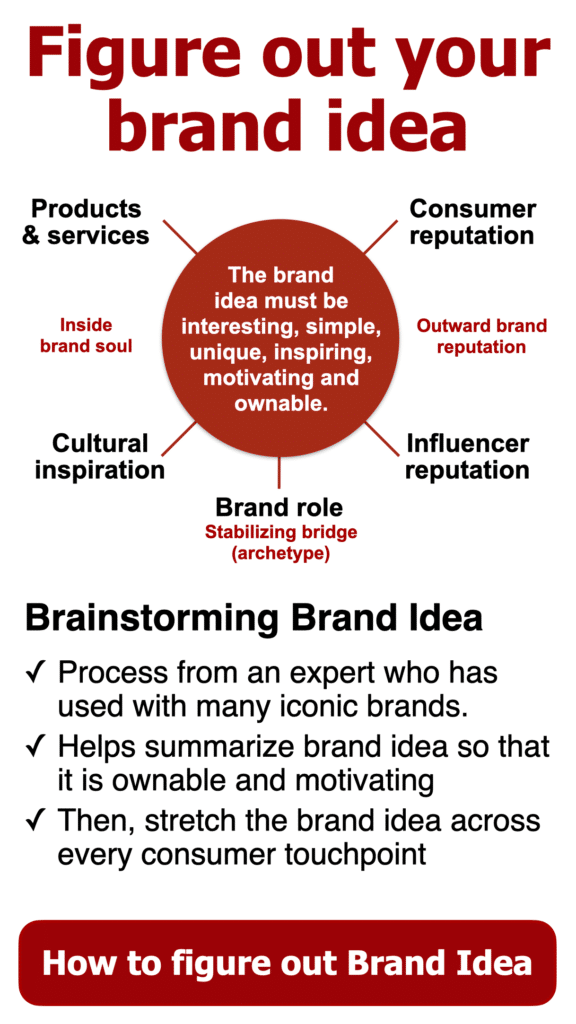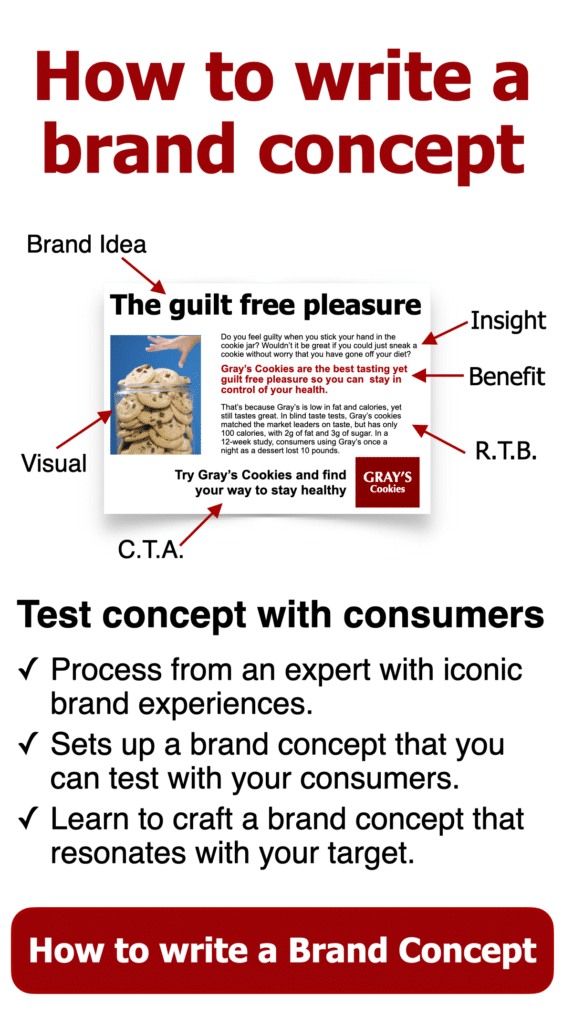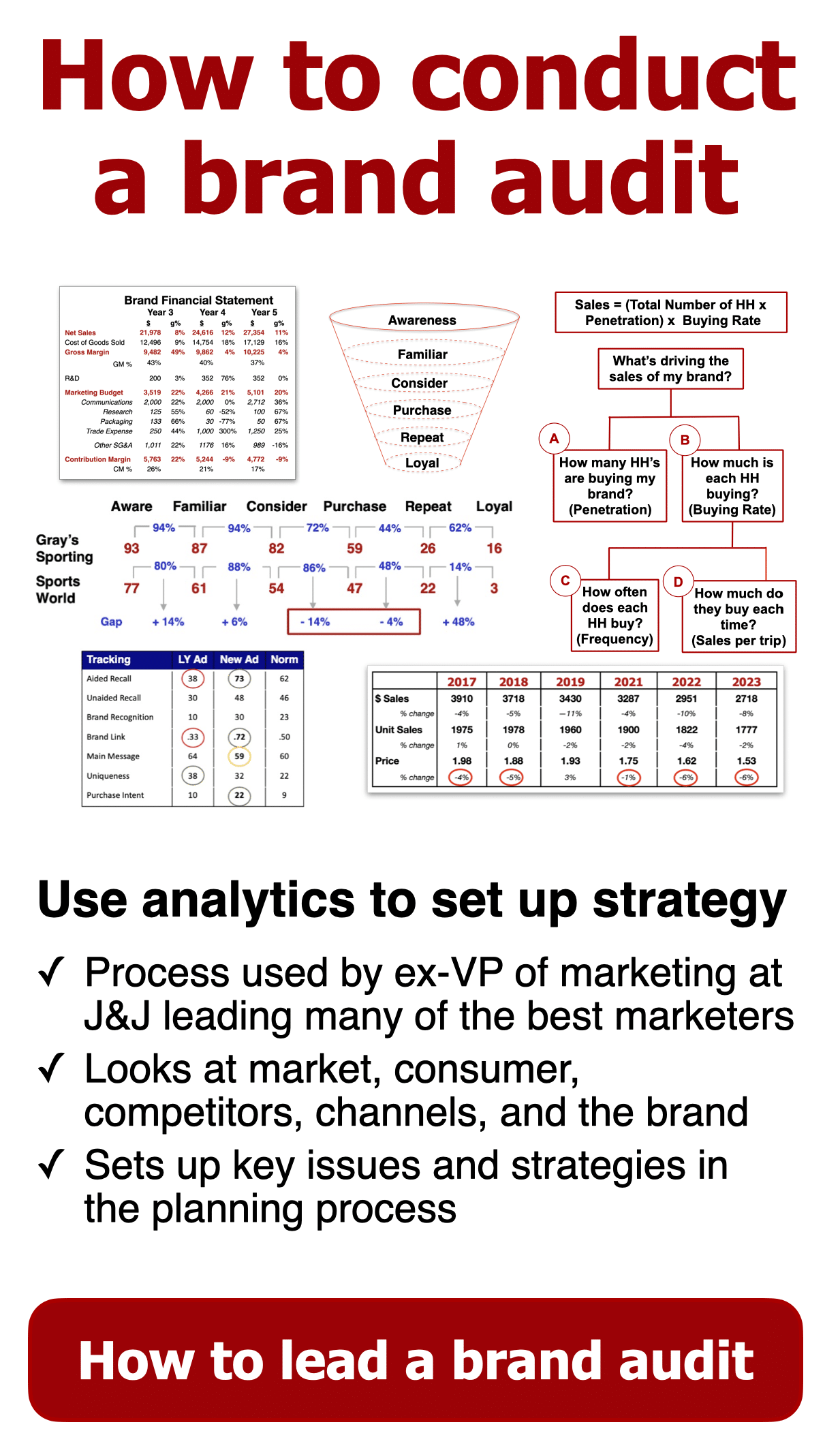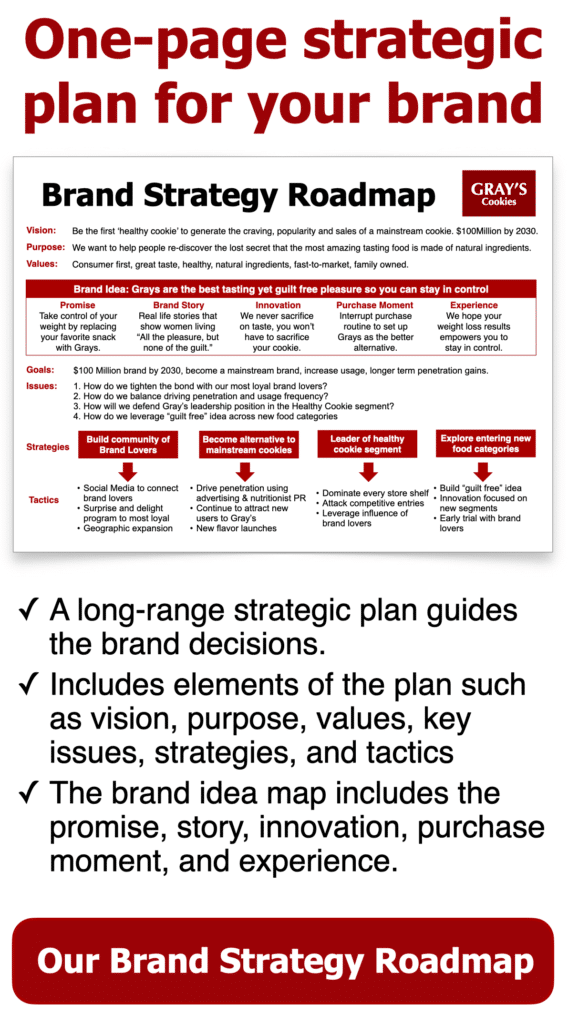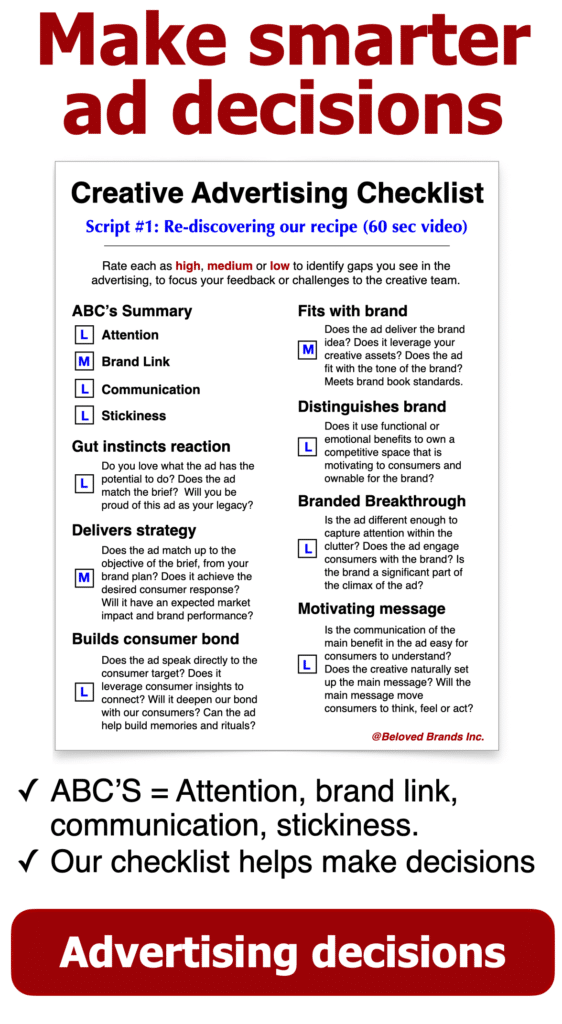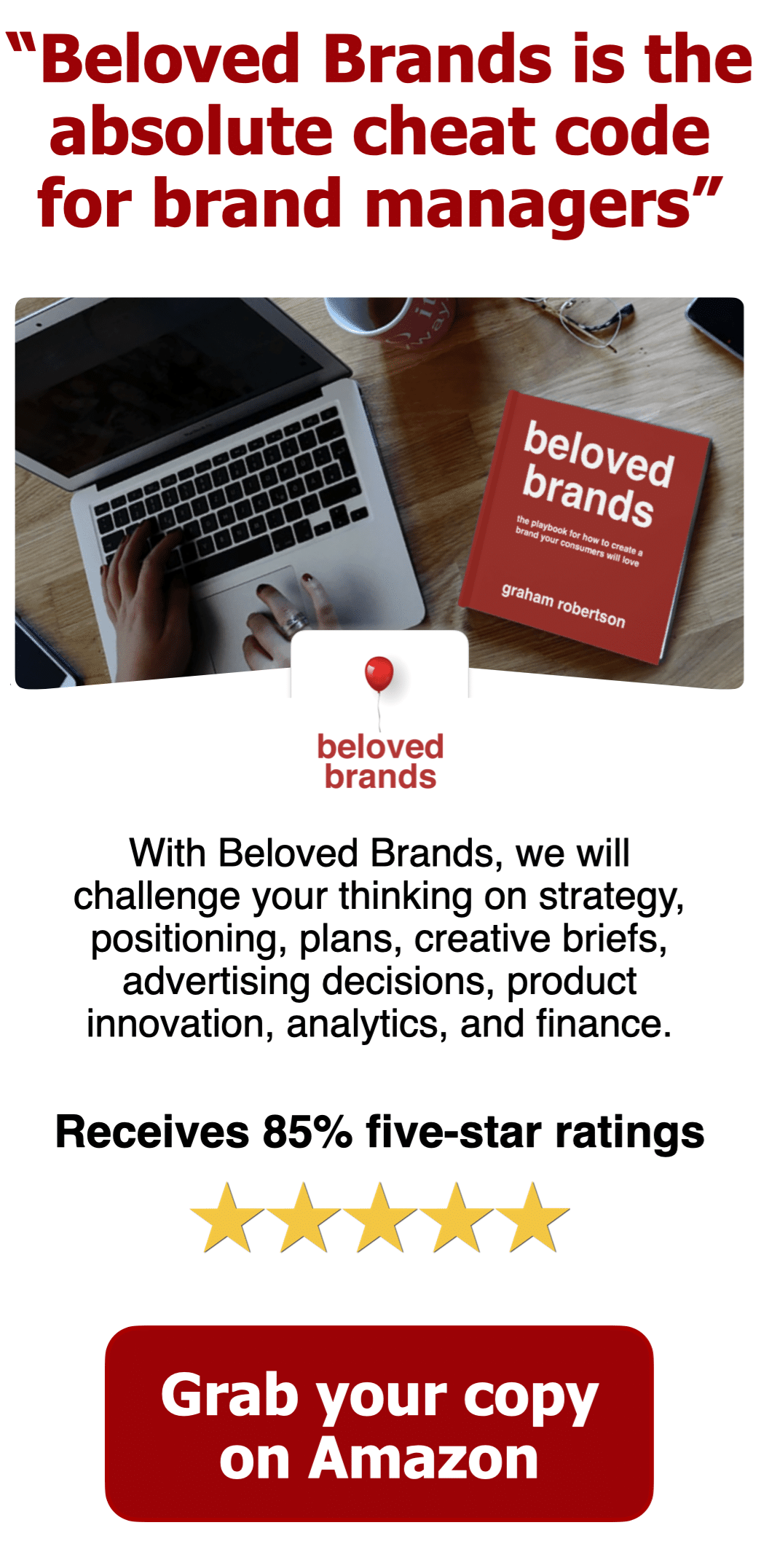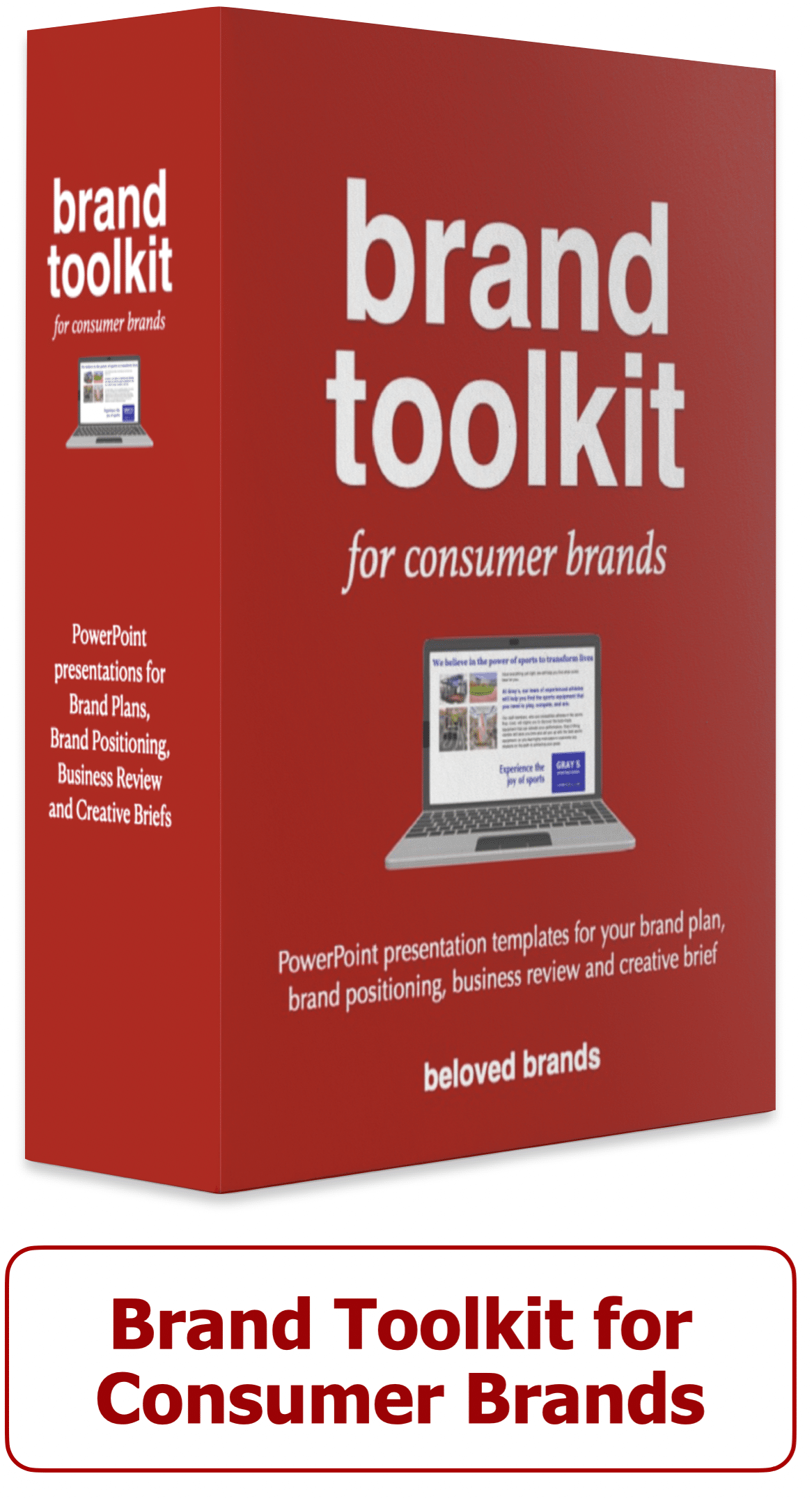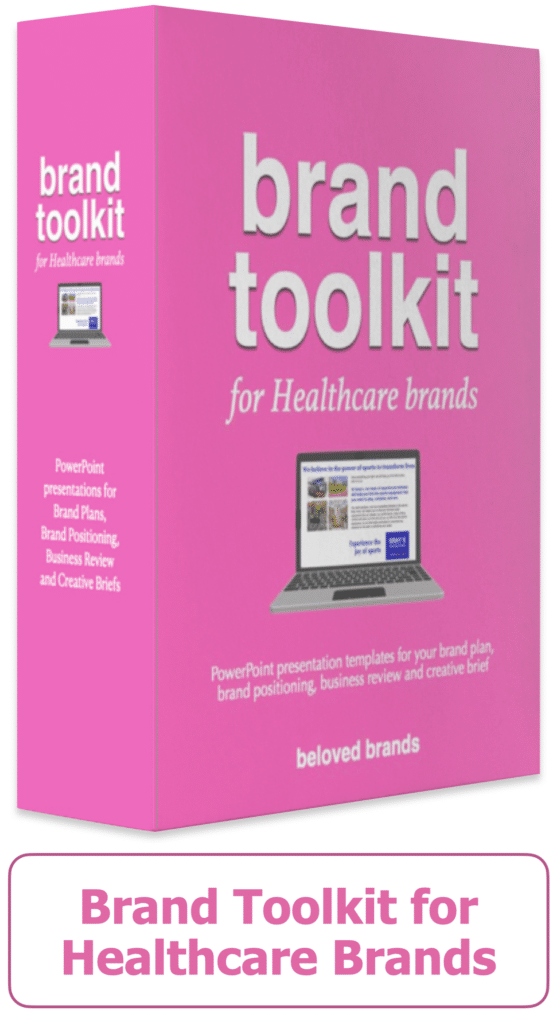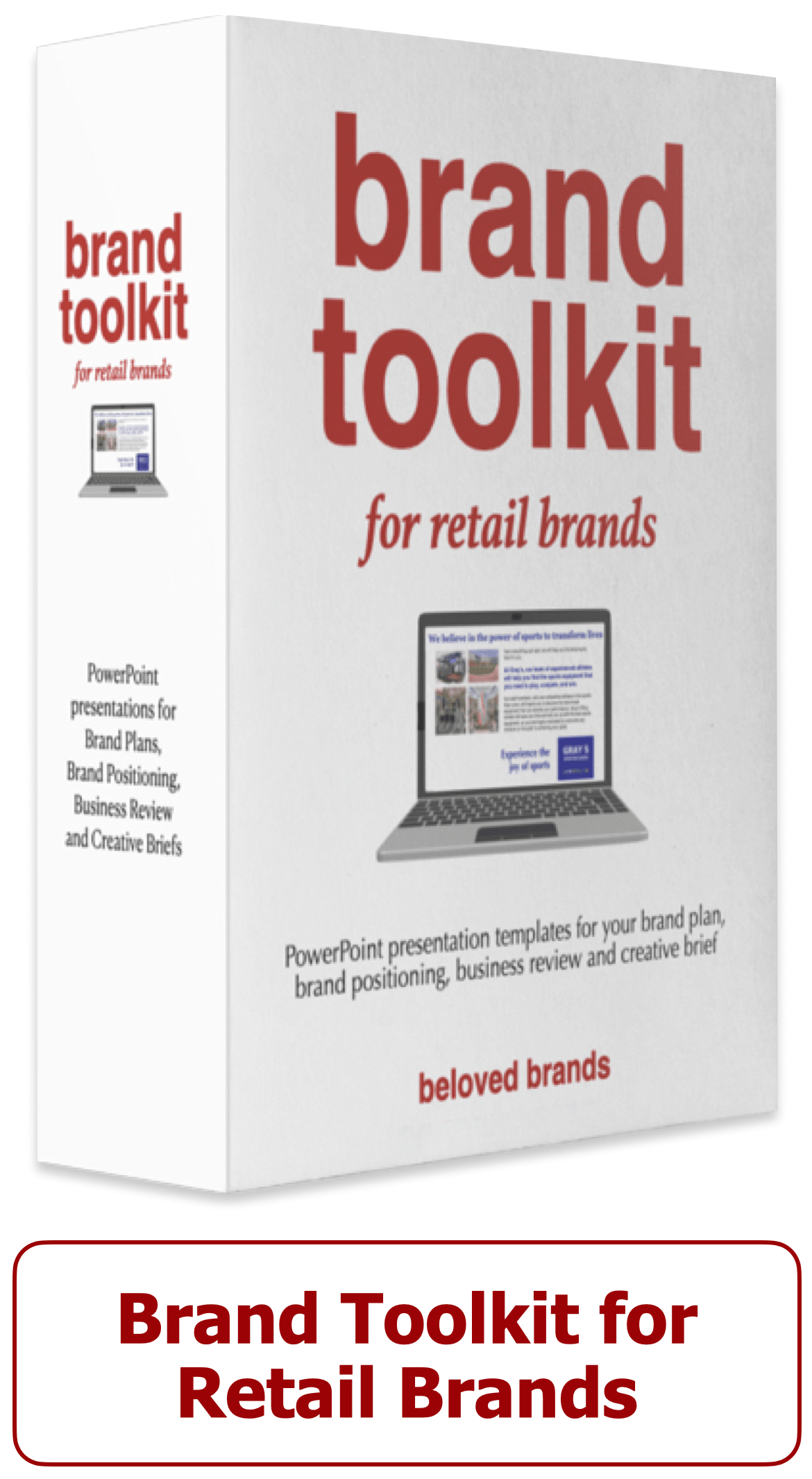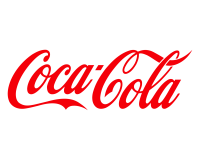Undeniably, the 4 P’s have dominated marketing discussions for years. However, I propose embracing an organizing brand idea to drive consistency across five crucial consumer touchpoints: brand promise, brand story, product innovation, purchase moment, and consumer experience.
Initially, most of us learned about marketing through the 4 P’s: product, price, place, and promotion. In my first marketing class, our professor illustrated the concept using a renowned brand. They demonstrated how the brand began with a product, determined its price, established distribution channels, and finally promoted it.
Admittedly, the 4 P’s offer a solid foundation for any marketing class. Nonetheless, they fall short in today’s dynamic marketing landscape. If you prefer sticking to the 4 P’s, that’s your choice, but I find the model quite limiting. Surprisingly, the 4 P’s fail to prioritize the consumer, which has always been a concern for me. Whether or not I can sway your opinion doesn’t matter.
Consumer touchpoints
Diving into our consumer touchpoints, let’s explore how you can manage your brand using the five essential elements: brand promise, brand story, innovation, purchase moment, and consumer experience.
Of course, a brand still requires a product, price, distribution, and promotion. In fact, I’ve seen marketers add even more P’s, with some claiming to have discovered the elusive fifth or even eighth P.
However, beginning with the product inadvertently leads to a self-centered approach. Regrettably, many who adhere to the 4 P’s framework end up neglecting the consumer entirely.
To illustrate, click on the diagram to see how we use our 5 consumer touchpoints instead of the 4 P’s.
Make everything you do about your consumer
The undeniable truth is that consumers are the primary source of revenue, not the product. While we do sell products, it’s crucial to remember that people are buying our brand. Perhaps it’s time to reframe our perspective and change the first line of the P&L statement to “purchases” instead of “sales.” Ultimately, it’s about the mindset you adopt when managing your brand, and I firmly believe that every decision should begin and end with the consumer in mind.
Now, you have a choice to make: do you represent your brand to the consumer, or do you represent your consumer back to the brand? The most effective marketers are those who champion their consumers.
To illustrate, click on the diagram to see how we use our 5 consumer touchpoints instead of the 4 P’s.
Consumers
The consumer's world has changed dramatically
With old-school marketing, the brand would advertise on TV to drive awareness and interest. The brand would use bright, bold packaging in-store with reinforced messages to close the sale. If the product satisfied consumers’ needs, they would repeat and build the brand into their day-to-day routines.
Today’s market is a cluttered mess. The consumer is bombarded with brand messages all day. And, consumer are inundated with more information from influencers, friends, experts, critics, and competitors. While the internet makes shopping easier, consumers must now filter out tons of information daily. Moreover, the consumer’s shopping patterns have gone from a simple, linear purchase pattern into complex, cluttered chaos.
Our five consumer touchpoints
Our five consumer touchpoints include the brand promise, brand story, innovation, purchase moment, and consumer experience. Regardless of the order, they reach the consumer; if the brand does not deliver a consistent message, the consumer will be confused and likely shut out that brand. While brands cannot control what order each touchpoint reaches the consumer, they can undoubtedly align each of those touchpoints under the brand idea.
With a 4 P’s mentality, this is how messy things get for the consumer. It becomes impossible to organize everything, so the consumer begins to see consistency.
Brand leaders must manage the consistent delivery of the brand idea over every consumer touchpoint. Everyone should be looking to the brand idea to guide and focus their decisions. That means everyone in management, customer service, sales, HR, operations, or an outside agency,
Brand idea
Use an organizing brand idea to consistently deliver everything the consumer touches
With today’s consumers being bombarded with 5,000 brand messages a day, the first seven seconds a consumer engages with a brand is a make-or-break moment. The brand must captivate the consumer’s mind quickly, or the consumer will move on. The brand must be able to entice consumers to want to find out more, then motivate consumers to see, think, feel, or act in positive ways that benefit the brand.
I will show you how to develop a brand idea that serves as your brand’s seven-second sales pitch. It is essential for every brand. You need to do the work on your brand positioning before you explore the brand idea.
Building a brand idea your consumer can love
To me, the organizing brand idea simplifies everything, not just for the consumer but for everyone working on the brand. The dictionary definition of the word “idea” means a thought, opinion, belief, or mental impression.
An organizing brand idea must be all those things. A brand must get consumers to agree on the brand reputation and get employees who work behind the scenes of the brand to agree and deliver. Let’s assume they are the same thing. What we are creating is the most significant, most prominent, and yet most succinct definition of the brand.
To become a successful and beloved brand, you need an organizing brand idea that is interesting, simple, unique, inspiring, motivating, and ownable. I don’t even know how you can run a brand if you can’t clearly define it in 7-10 seconds.
Use an organizing brand idea to steer everything across five consumer touchpoints
First, use the organizing brand idea to inspire a simple brand promise that separates your brand from competitors, and projects your brand as better, different, or cheaper, based on your brand positioning.
Next, the organizing brand story must come to life to motivate consumers to think, feel, or act while establishing the ideal brand’s reputation to be held in the minds and hearts of the consumer. The brand story should align all brand communications across all media options.
Then, build a fundamentally sound product, staying at the forefront of trends and technology to deliver innovation. The organizing brand idea should steer the product development teams to come up with innovation ideas that remain true to the brand idea.
The brand idea keeps everything consistent
And it is the organizing brand idea that should move consumers along the purchase journey to the final purchase moment. Essentially, the brand idea helps steer the sales team and sets up retail channels to close the sale.
Finally, turn usage into a consumer experience that becomes a ritual and favorite part of the consumer’s day. And, the organizing brand idea guides everyone who works on the brand to deliver great experiences. The 4 P’s completely miss the consumer experience experience.
Below is an example of how Tesla’s organizing brand idea comes to life.
To illustrate, click on the diagram to see how we use our 5 consumer touchpoints instead of the 4 P’s.
Apple
Let's look at how Apple builds everything simplicity
The organizing brand idea for Apple is “making technology so simple that everyone can be part of the future.” Steve Jobs insisted they take a consumer-first mentality. As they transform leading technology advancements into “consumer-accessible” technology, helping fuel the perception among the mass audience that Apple is an innovative leader.
To illustrate, click to see how Apple’s organizing brand idea steers all 5 consumer touchpoints instead of the 4 P’s.
Apple has done a great job in taking that simplicity brand idea and stretching it across their brand story through advertising, and their innovation plan (as they have entered many new technology categories). They have also used their organizing brand idea to guide how they manage the purchase moment (to make sure their retail outlets are easy for consumers), and how they create happy experiences for consumers. And when they don’t nail the ideal consumer experience, they go out of their way to help out. And, they also have the genius bar and on-site lessons, which help increase the knowledge of consumers.
To illustrate, click to see how Apple’s organizing brand idea steers everything that happens on Apple.
Marketing Communications
Build out your organzing brand story by bringing the brand idea to life
You should use your organizing brand idea to help you make creative and media decisions together. You will see the ads in context to figure out the best combinations for your brand. Also, you will be able to see the possible breadth of each creative idea, which can provide a clue to the campaign’s longevity. In today’s cluttered media world, the brand idea should help organize all four types of media, including paid, earned, shared, and owned.
To illustrate, click to see how the organizing brand idea steers all the media choices.
Innovation
Build your innovation around the consumer needs
Use your organizing brand idea to guide the product development team to manage innovation ideas at the exploratory stage, (beyond five years), pipeline ideas (two to five years), and go-to-market launch plans (within the next two years). As the brand leader, you need to influence, manage, and even direct your product development team to ensure they focus on the brand strategy.
Use a stage-gate innovation system with regular brainstorming, and consistent stages of approval, that have diligence and oversight on decisions. Identify new opportunities through continually observing and finding unmet consumer needs, market trends, and pain points, which new product ideas can solve.
Managing the innovation
Use regular brainstorming to build a robust pipeline of ideas. From the best innovation ideas, develop concepts to test with consumers, measuring new ideas on uniqueness, motivation to purchase, ownability, potential size, and strategic fit with the brand. Listen to consumer feedback to optimize, adjust, or pivot the learning into new ideas.
Build an innovation pipeline, pushing the best ideas through concept refinement, using market testing and a decision process with management. Approvals include execution plan and milestones from production to launch. Drive a robust pipeline, with a balance of lower risk launches and higher risk exploratory ideas.
Create a go-to-market launch plan with project management, including name, logos, packaging, production, and channels. Build marketing support for advertising, launch presentations, and retail plans.
To illustrate, click on the innovation process diagram to zoom in.
Purchase moment
Managing your purchase moment by lining up with how consumers wish to buy your brand
A great case study is the Apple brand, which now uses all seven of these business models, as they sell to both consumers and businesses, sell both products and services, sell directly, through retailers, and their own retail stores. Apple allows customers to engage the brand in whichever way the customers choose to purchase.
Alibaba
Hema stores in China are laid out to accommodate how the consumer wishes to purchase
I had a chance to visit a Hema store in China, which is Alibaba’s “new retail” intended to be the perfect blend of offline and online. It puts the consumer in the driver’s seat to shop how they want. Hema by Alibaba is the most innovative grocery store is in China
You can online, go pick it up or get it delivered within 30 mins. Or Shop in person, and get it delivered. Third, pick out the food yourself, hand it over, get it cooked by a chef, and enjoy it with your family. This concept felt similar to Marche in Switzerland or a few degrees beyond what Whole Foods do with cooked options. They are using technology to take it a few steps further.
What Hema has done is gone through the purchase journey and mapped out how the consumer wants to engage at every stage–including discover, learn, shop, buy, made, and deliver before consuming. This thinking goes far beyond the 4 P’s.
Consumer experience
Manage the consumer experience through your people and culture
Your organizing brand idea should steer the internal culture to inspire and steer everyone who works behind the scenes of the brand. Brand leaders must manage the consistent delivery of the brand idea over every consumer touchpoint. Everyone should be looking at the brand idea to guide and focus their decisions. More companies need to focus on their internal brand to make sure management, customer service, sales, HR, operations, or an outside agency are all moving in the same direction.
To illustrate, click to see how the organizing brand idea steers everyone who works on the brand.
The best brands consistently deliver because the best brands spend as much effort in marketing to themselves because they know it is their people who will deliver the brand. When you build your brand idea, I recommend you use a cross-functional team, including salespeople, R&D, human resources, finance, and operations. Their participation is one way to gain their buy-in. But that’s not where it stops.
Use the organizing brand idea to drive your culture
Use your internal brand communications tools to drive a shared definition of the brand idea. Get everyone to articulate how their role delivers that brand idea. Give the external and internal brand story equal importance to the consumer experience you create for your brand.
Everyone who works on the brand should use the brand idea as inspiration, and to guide decisions and activities across every function of your organization. It is the people within the brand organization who will deliver the brand idea to the consumer. Everyone needs a shared understanding of and talking points for the brand.
When you work on a brand that leads to the customer experience, your operations people will be responsible for the face-to-face delivery of your brand to the consumer. Develop a list of service values, behaviors, and processes to deliver the brand idea throughout your organization.
Ritz-Carlton
Ritz-Carlton has created a culture of "wow stories" at the purchase moment
A great story that makes its way around the Ritz-Carlton world. A guest who had just left the hotel called to say that their son had left his stuffed giraffe in the room. The boy could not stop crying. The only thing these distraught parents could think of to tell their son is that the giraffe was staying on the vacation a little longer. So the staff found the giraffe and overnighted it to the boy. Most luxury hotels would have done that. But that was not enough for Ritz-Carlton.
To illustrate, click on the diagram to zoom in.
Knowing what the Mom had told their son about staying on a bit longer, the staff also included a photo album of the giraffe enjoying his extra stay. They took photos sitting by the pool, getting a massage in the spa with cucumbers on his eyes, and laying out on the beach. Imagine how the parents felt. And, the signal it sends to them about the Ritz-Carlton staff. Imagine how many friends they may share that story with.
Sharing wow stories
To inspire each other, everyone at Ritz-Carlton goes through a daily line up where they share wow stories, both local stories, and stories from other hotels around the world. This line up keeps everyone in line, but it also keeps people fully engaged.
Harvard did a study on Employee Engagement, stating that the average company had 29% of their employees who were fully engaged and they labeled this group as the ‘Super Stars’. Using the same criteria, Ritz-Carlton has 92% of their staff are considered fully engaged. No wonder they are able to win so many service awards and no wonder they can create such an experience for their consumers. They have fully created a culture that now defines the brand..
To illustrate, click to see how the organizing brand idea steers the external and internal.
Use a brand credo document to steer everyone who works behind the scenes of the brand
First, start with your organizing brand idea and turn it into an inspiring promise statement, which explains to your people how they can positively impact your customers.
Next, use your brand’s core point of difference to outline the expectations of how everyone can support and deliver the point of difference. For instance, a great exercise is to get every department to articulate its role in delivering the brand idea.
Then, connect with your people by tapping into personal motivation for what they can do to support your brand purpose, brand values, and core beliefs. Make it very personal.
Your organizing brand idea can highlight the flaws of the consumer experience
The other beauty of having a crystal clear organizing brand idea is that everything that goes against that brand idea almost acts as an obvious virus. Looking below, here are four examples of where Apple is missing out on “simplicity,” which puts the brand idea at risk. These should trigger action plans to build into your brand plan.
To illustrate, click to see how the organizing brand idea can uncover flaws.
Using the leaky bucket tool to assess how your consumer shops
Every marketer should regularly shop their own category. It is shocking when you see such bad service, open inadequate packaging, or meander around a website; you can tell the marketer has never purchased their own brand. While many think marketing is about putting consumers into the funnel, you should also be analyzing why your consumers can fall out of the funnel at any moment.
Moreover, this tool forces you to look at the various stages a consumer goes through as they move along the brand love curve, and then analyze why they exit your brand.
To illustrate, click to see how our leaky bucket tool works.
T-Mobile
T-Mobile built a new structure to create consumer-focused teamwork to deliver a better consumer experience
What T-Mobile figured out was customers were opting to use the self-serve options for the easy customer service issues, which meant those that reached the customer service reps were all difficult to solve. So, T-Mobile restructured its teams, moving from a one-on-one customer service approach to a team approach. Next, each rep was now part of a team, and they could access peers or tech specialists to solve these difficult challenges. Moreover, they had access to coaches, who were super reps and could join in and provide solutions. This thinking goes far beyond the 4 P’s.
To illustrate, click to see how T-Mobile organizes their customer service team.




